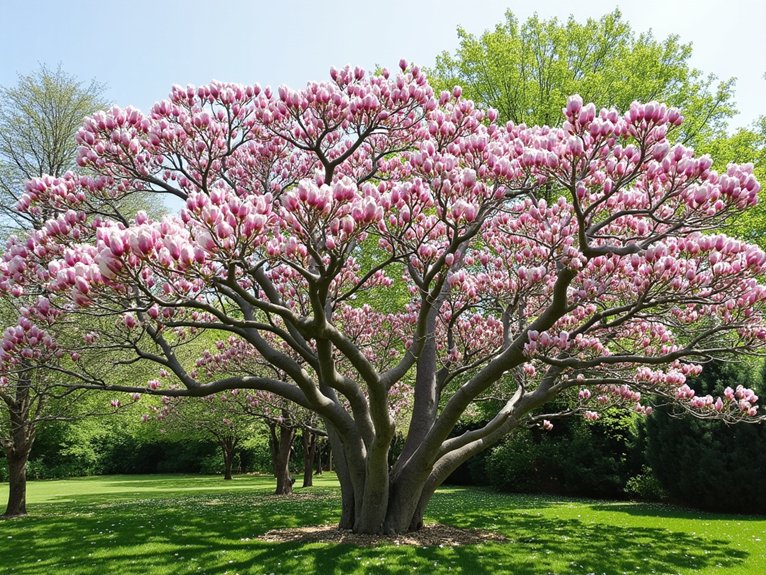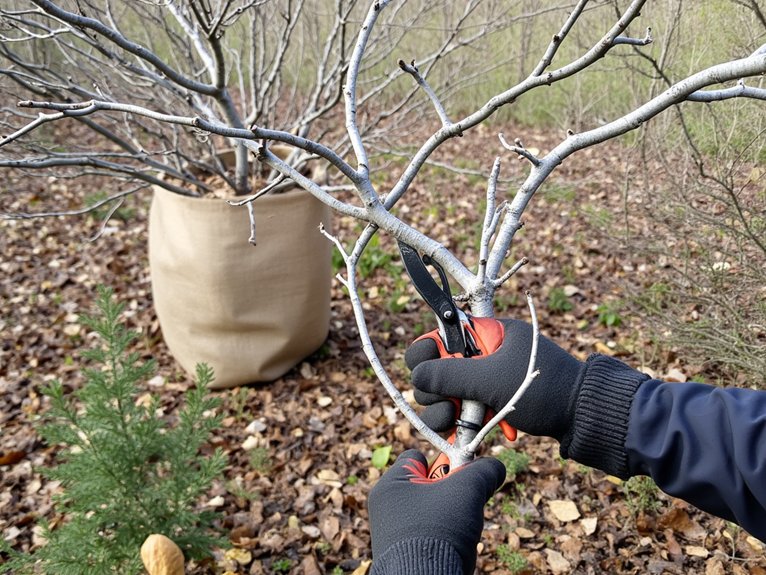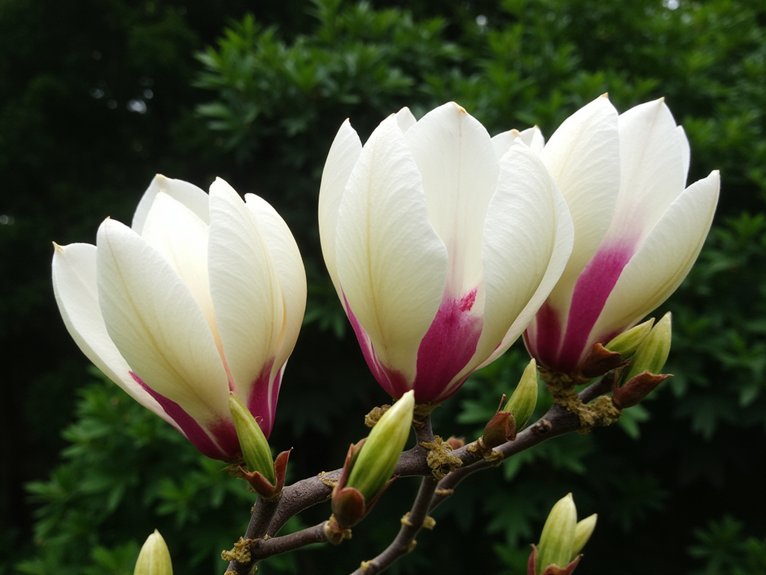Magnolia trees captivate gardeners and homeowners with their large, fragrant blooms and glossy foliage that can transform any landscape. “These beloved trees offer options for every space, from compact varieties reaching 8-10 feet to majestic specimens towering at 70 feet,” notes botanist Dr. Sarah Chen. While magnolias provide stunning visual impact and support local pollinators, their success depends on specific planting requirements and maintenance techniques that guarantee healthy growth and abundant flowering.
Contents
The Timeless Appeal of Growing Magnolias

Why have magnolia trees captivated gardeners and homeowners for generations? These majestic trees combine stunning beauty with remarkable durability, offering year-round appeal through their distinctive shapes and fragrant blooms. Their flowers release an intoxicating mix of lemony and spicy scents that perfume entire gardens.
Magnolia symbolism runs deep in American culture, particularly in the South, where they represent strength and endurance. As state flowers of Mississippi and Louisiana, these adaptable trees thrive in various climates while providing essential benefits to landscapes:
- Enhanced curb appeal
- Natural shade
- Wildlife habitat
- Four-season interest
- Long-lasting beauty
Essential Planting Tips for Success
When planting a magnolia tree, timing and proper technique make all the difference between thriving growth and disappointing results. Successful planting techniques begin with selecting the right season – spring for evergreen varieties and late fall for deciduous types in warm regions.
The soil requirements demand careful attention. Prepare a planting hole 50% wider than the root ball in well-draining, slightly acidic soil. Position the uppermost root just above undisturbed ground level. After planting, water deeply 2-3 times weekly for the first several months, protecting young trees from intense afternoon sun. Apply a layer of mulch to retain moisture and regulate soil temperature.
Year-Round Care and Maintenance

While proper planting sets the foundation, maintaining a magnolia tree throughout the year requires specific care routines that support its health and beauty. Regular seasonal pruning helps shape the tree and remove damaged branches, ideally performed after flowering has finished in late spring or early summer.
Soil amendments play an essential role in ongoing maintenance. Apply balanced fertilizer (8-8-8 or 10-10-10) three times during the growing season, and maintain a 2-3 inch layer of mulch around the base. Deep watering should occur weekly, adjusting frequency based on rainfall and seasonal changes.
Monitor for pests and diseases regularly, treating issues promptly to guarantee continued health.
Dealing With Common Magnolia Problems
Magnolia trees can face several common challenges that gardeners should learn to identify and address promptly. Key pest management strategies include monitoring for magnolia scale, aphids, and thrips, which can be treated with targeted insecticidal solutions or natural predators.
Disease prevention relies on maintaining proper growing conditions and swift intervention. Watch for signs of powdery mildew, wetwood, or verticillium wilt. “Early detection is essential,” notes arborist Dr. Sarah Chen. “Look for yellowing leaves, branch dieback, or unusual spots on foliage.”
Regular inspection, proper watering practices, and maintaining good air circulation help prevent most common magnolia problems.
Best Magnolia Varieties for Your Garden

Numerous stunning varieties of magnolia trees offer gardeners flexible options for any landscape design. When considering variety selection, homeowners should evaluate their regional preferences and available space carefully.
For smaller gardens, compact varieties like ‘Jane’ and ‘Royal Star’ reach heights of 10-15 feet, producing vibrant spring blooms. The ‘Little Gem’ cultivar, growing 15-20 feet tall, suits medium spaces with its glossy foliage and extended blooming season. For larger landscapes, ‘Leonard Messel’ makes a dramatic statement, reaching 30 feet with elegant bicolor flowers.
Each variety brings unique characteristics, from flower color to blooming periods, allowing gardeners to select the perfect magnolia for their specific needs.
